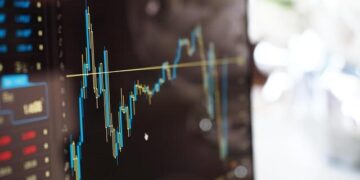In an evolving economic landscape marked by shifting market dynamics and emerging sectors, traditional measures of growth are increasingly being questioned. “Rethinking Growth in a Broadening Economy,” a recent analysis by Seeking Alpha, delves into the complexities of assessing progress beyond conventional metrics. As investors and policymakers grapple with diverse indicators and expanding definitions of value, this article explores how a broader perspective on growth could reshape strategies and expectations in the years ahead.
Rethinking Growth Strategies Amid Shifting Economic Dynamics
As global economies undergo rapid transformation, traditional growth models are being challenged by unpredictable fiscal policies, technological innovations, and evolving consumer behaviors. Businesses are now compelled to adopt more adaptive strategies that prioritize resilience over sheer expansion. Flexibility in resource allocation and a heightened focus on market diversification emerge as pivotal tactics, enabling firms to capitalize on new opportunities while mitigating risks tied to volatile sectors.
Key considerations driving this strategic shift include:
- Increased emphasis on sustainable investments and ESG criteria
- Integration of advanced analytics for real-time market insights
- Collaboration with emerging markets to harness untapped demographic potential
| Growth Focus | Traditional Approach | New Dynamics |
|---|---|---|
| Capital Deployment | Heavy infrastructure investment | Agile funding for tech and innovation |
| Market Engagement | Domestic centric | Global and cross-sector alliances |
| Risk Management | Fixed buffers | Dynamic scenario planning |
Navigating Market Expansion Through Diversified Investment Approaches
As global economies shift and diversify, investors are increasingly recognizing the necessity of adopting multifaceted strategies to capitalize on new market opportunities. Rather than relying on traditional, singular avenues for growth, a diversified investment approach enables stakeholders to mitigate risks while capturing value across varying sectors and geographies. This approach is especially critical in volatile environments where sector-specific disruptions can quickly devalue concentrated portfolios.
Successful market expansion now hinges on blending assets that offer both stability and growth potential. Key elements include:
- Allocating capital across emerging technologies, real estate, and sustainable ventures
- Balancing short-term gains with long-term resilience
- Integrating alternative investments such as private equity or commodities to offset traditional market downturns
| Investment Category | Risk Level | Expected Growth | Typical Time Horizon |
|---|---|---|---|
| Emerging Technologies | High | 15-25% CAGR | 5-10 years |
| Real Estate | Medium | 6-10% CAGR | 7-15 years |
| Sustainable Ventures | Medium-High | 10-18% CAGR | 5-12 years |
| Commodities | Variable | 4-12% CAGR | 1-5 years |
Leveraging Innovation and Sustainability for Long-Term Economic Resilience
As global markets face unprecedented disruptions, the fusion of innovation with sustainability has emerged as a critical driver for economic durability. Industries that prioritize green technology and circular economy principles are not only reducing their environmental footprint but also enhancing operational efficiency and resilience. Leading corporations are now investing heavily in renewable energy, AI-driven resource management, and eco-friendly product design, reshaping traditional business models to better navigate future uncertainties.
Key pillars shaping this economic transformation include:
- Technological integration: Utilizing automation and data analytics to optimize energy consumption and waste reduction.
- Stakeholder collaboration: Partnerships across governments, private sector, and communities to foster sustainable infrastructure development.
- Regulatory alignment: Embracing policies that encourage long-term investment in green innovations.
| Innovation Sector | Impact on Sustainability | Economic Benefit |
|---|---|---|
| Renewable Energy | Significant carbon emission reduction | Lower operational costs |
| AI & Data Analytics | Optimized resource allocation | Increased productivity |
| Circular Economy | Waste minimization | New revenue streams |
In Conclusion
As the global economy continues to diversify and evolve, traditional measures of growth are being challenged and redefined. Investors and policymakers alike must adapt to this broader perspective, recognizing that sustainable progress goes beyond mere GDP figures. By embracing a more comprehensive understanding of economic expansion, stakeholders can better navigate the complexities of today’s market and build resilience for the future. Rethinking growth is no longer optional-it’s imperative for driving long-term value in an increasingly interconnected world.






























